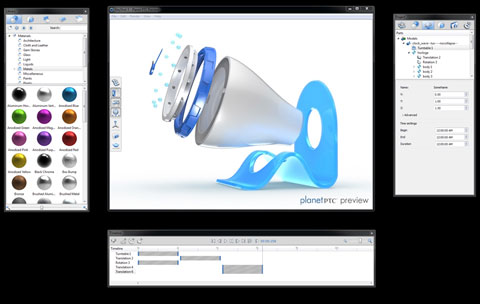
The majestic North Shore Mountains, the backdrop for Siggraph 2011, Vancouver
It’s relatively easy to complain about the Siggraph conference and exposition – not enough engineering-related products, small show floor lacking major CAD and system vendors, no sessions related to product development.
But when you’re at the Vancouver Convention Centre overlooking the Burrard Inlet with the majestic North Shore Mountains in the background and weather so perfect you don’t even think to call it weather, you have absolutely no right. Please don’t hate me because I’m in a beautiful place.
On top of this bucolic backdrop, vendors of graphics systems have another reason to feel good: Jon Peddie Research reported last week that graphics shipments were up by 6.3 percent for Q2 2011.
Although Siggraph is about as far from a CAD conference as poutine is from risotto, there are still enough interesting developments to report. So report I will, in three installments for each day of the exposition. This one centres on processing and performance; the second on 3D scanning; and the third on 3D printing and storage.
Big three hold their cards
From the hardware processing side of things, there is nothing startling to report. The big three – AMD, Intel and Nvidia – decided to forego any blockbuster product announcements in favour of wooing customers with recent developments and partner presentations.
This left the stage to a group of smaller players.
Graphics virtualisation
Parallels, out of nearby Renton, Wash., launched what it calls “direct assignment technology” for workstation virtualisation. The company claims that its software can run an application on a virtualised system at 95 percent or more of the speed of the original system. It does this by directly assigning dedicated resources – including CPU, memory, graphics and networking – to virtual environments.
A new yardstick
Parallels is using SPECviewperf software to demo its performance at Siggraph. The developer of that software, SPEC’s Graphics and Workstation Performance Group (SPEC/GWPG), also had an announcement at the show: with V12, the group is doing a major overhaul of SPECviewperf, with support of more application programming interfaces (APIs) and operating systems, and the ability to quickly develop viewsets for testing graphics performance based on popular applications.
OpenGL advances
SPECviewperf currently measures graphics performance for systems running applications based on the OpenGL API. The developer of OpenGL, The Khronos Group, announced the release of OpenGL 4.2, bringing new graphics functionality to the widely adopted, cross-platform API.

Announced at Siggraph 2011, Luxion KeyShot 3 features a new patent-pending animation system
Rendering spreads wings
One of the more pleasing developments in recent years has been new tools that make it easy and fast to render CAD models. Notable vendors in this space are Bunkspeed; Luxion, the other party in the Bunkspeed divorce; and Autodesk Showcase.
These companies’ tools have the ability to make CAD software even more valuable to a company, extending the benefit of 3D models from product design through engineering and into marketing.
Use of these low-cost rendering tools in engineering is an under-tapped market according to Thomas Teger, vice president of marketing for Luxion, the maker of KeyShot software. Beyond showing what the final product will look like, the simplified rendering programs can be used to visualise parts and assemblies that are hidden from view, such as the inner workings of a brake pump.
Simplified animation
Rendering applications could gain even more traction in engineering departments with announcements such as the one Luxion made today at Siggraph: It’s a simplified way to add animation to parts imported into KeyShot from popular CAD programs.
The KeyShot 3.0 approach, due for release in October, eschews traditional keyframe animation. Instead it uses something called “offset transforms” that makes it possible to add individual animation components to single or multiple parts, move them in the timeline, and copy, paste or move them within the model hierarchy.
Paradise beckons
That’s it for now. Time to get back to the Convention Centre for a reception. Did I tell you it’s sunny and 20 degrees C with an ever-so-slight breeze? Sorry. Oh, c’mon now, don’t be hatin’…
Bob Cramblitt reports on CAD/CAM/CAE technologies that impact product development. He’s been attending and reporting on Siggraph since 1983.






